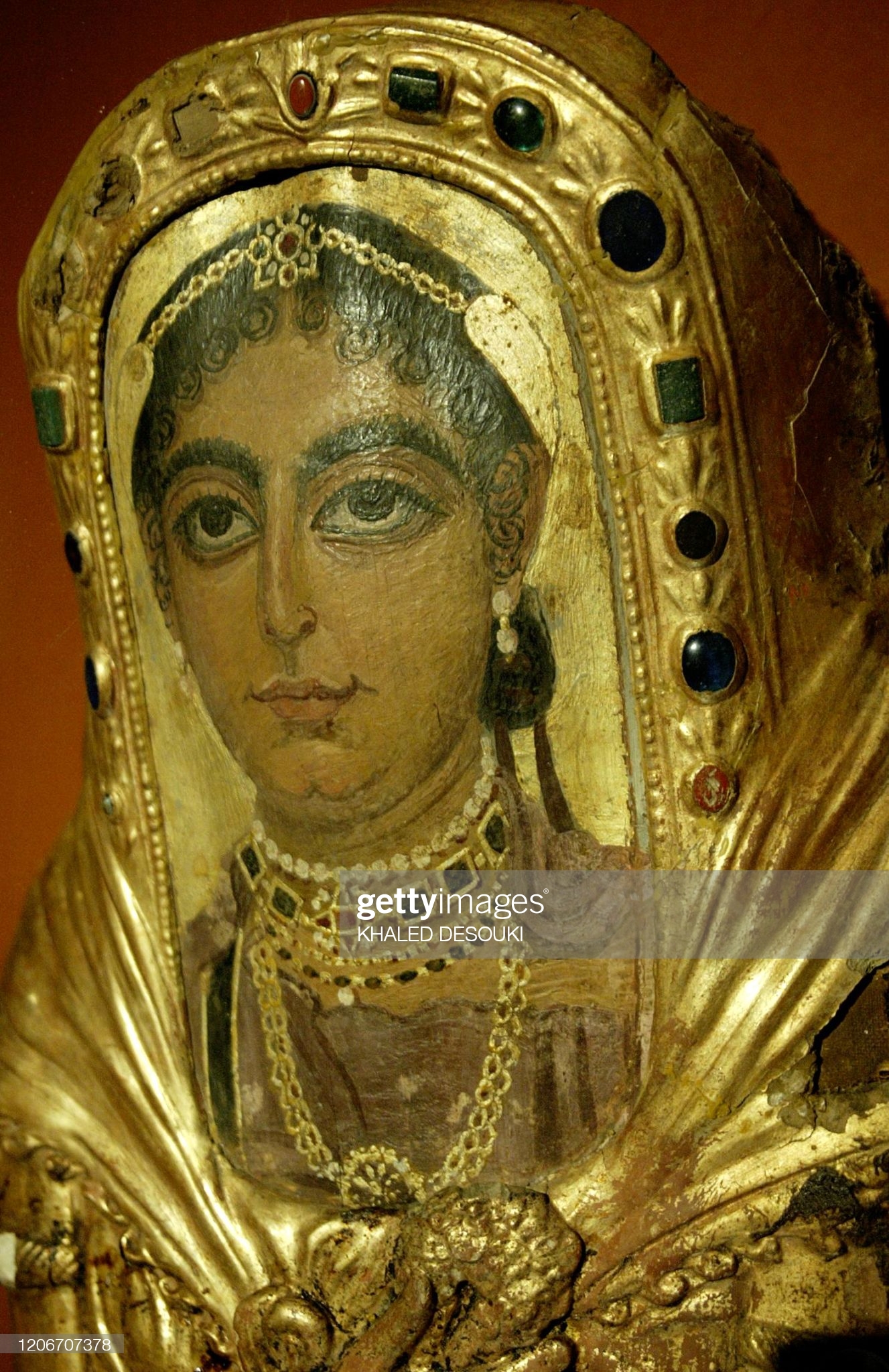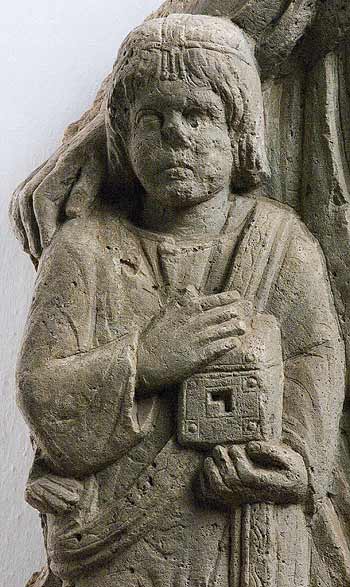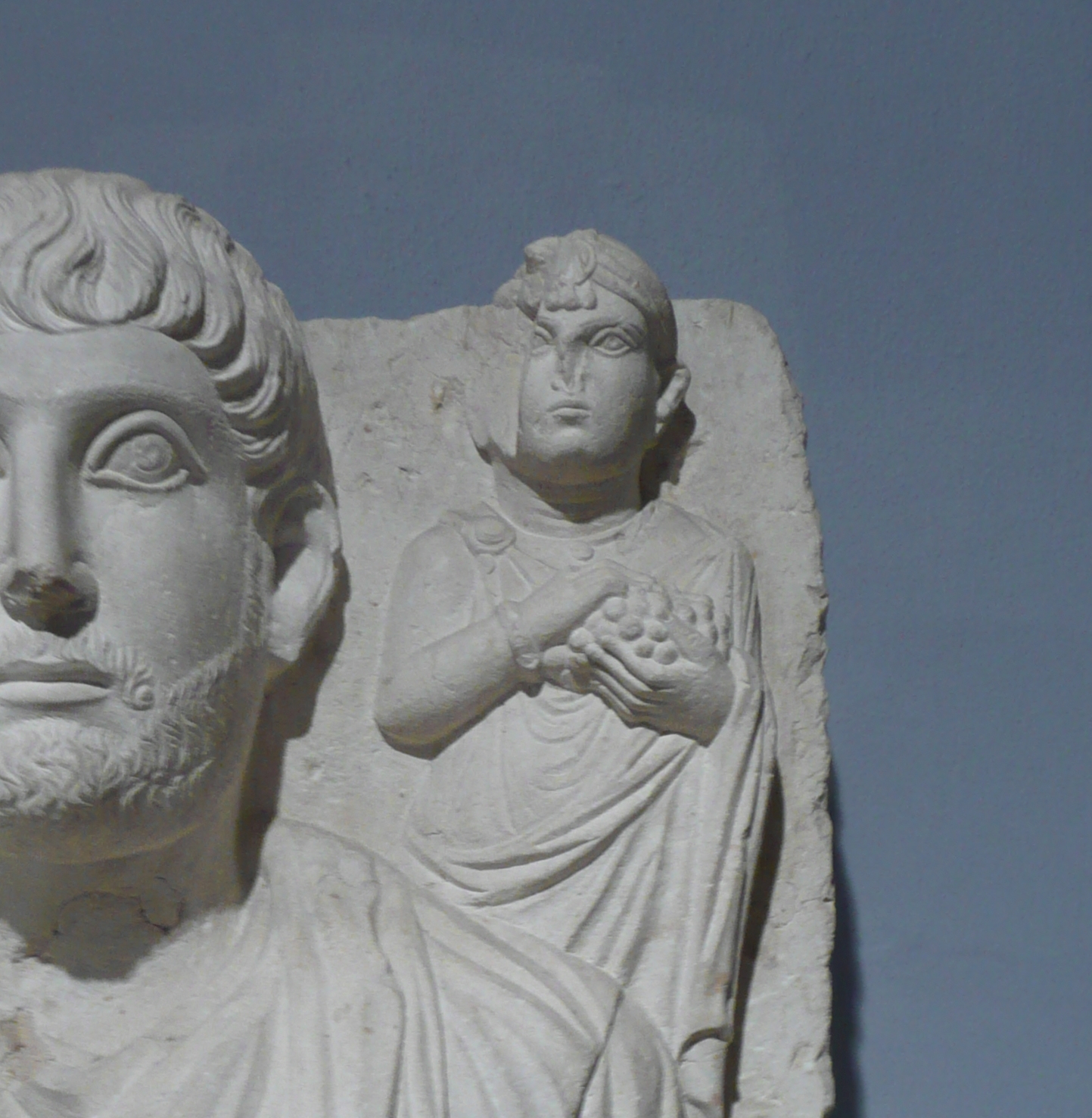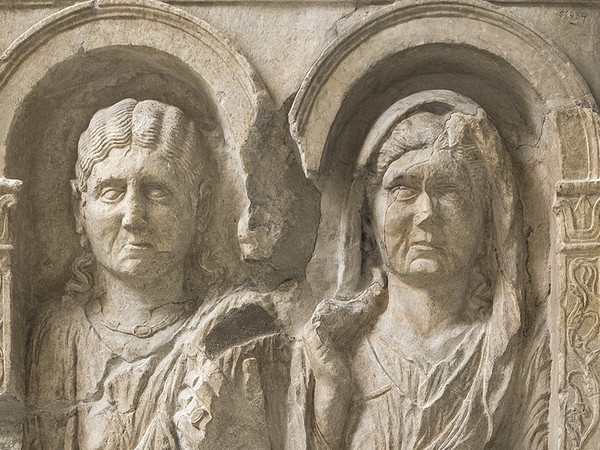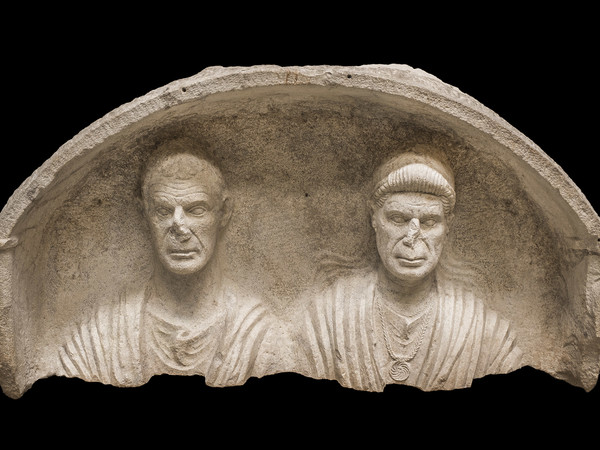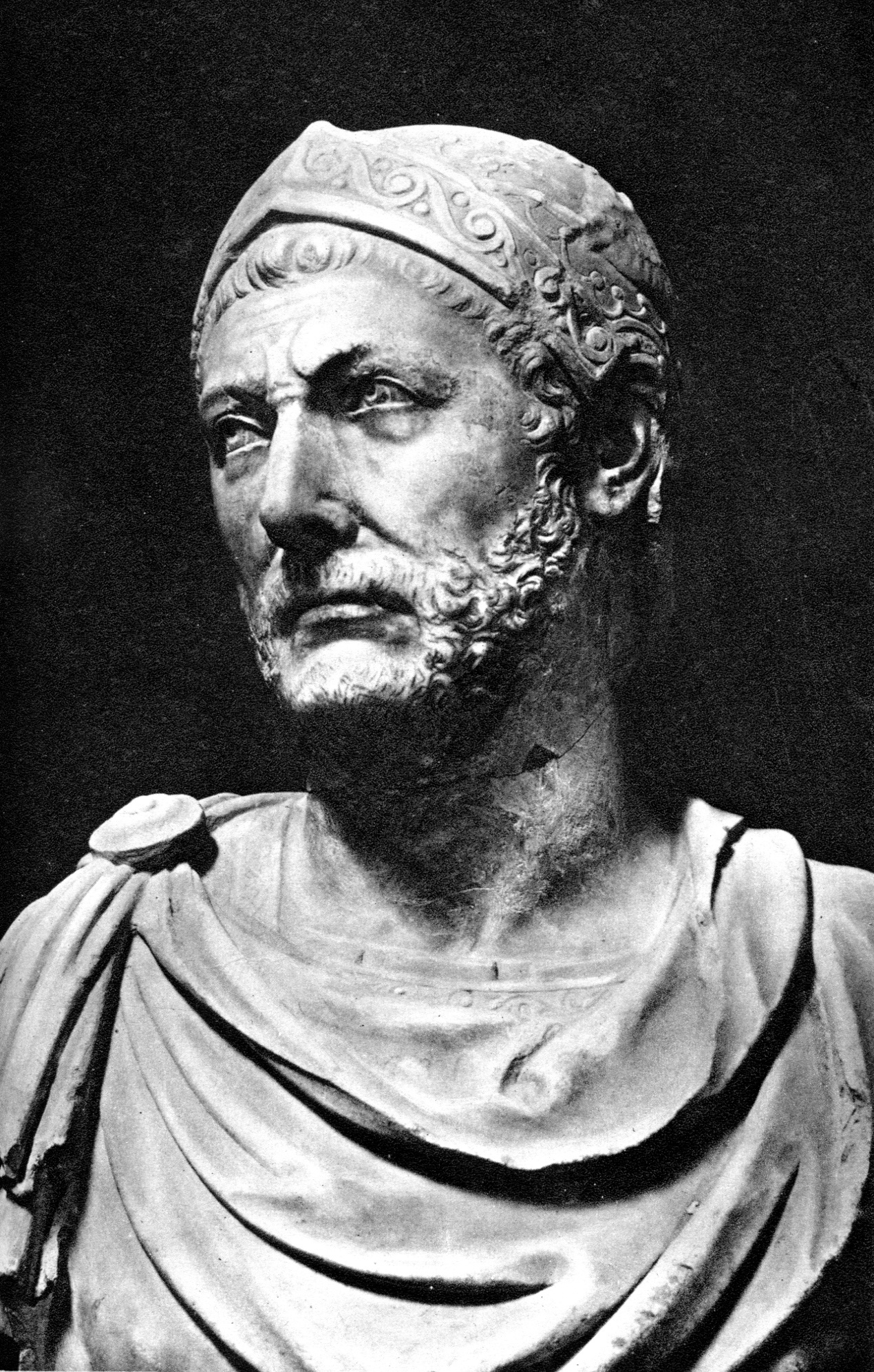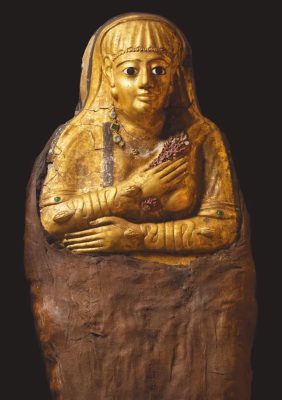
© Julia Thorne, Manchester Museum
https://the-past.com/feature/going-for-gold-reconsidering-mummies-from-the-graeco-roman-period/
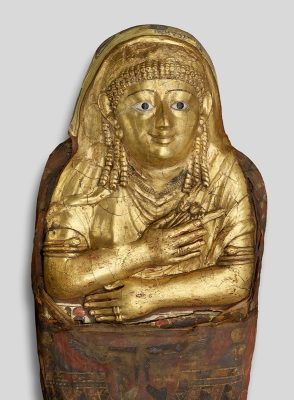
https://egyptmanchester.wordpress.com/2020/05/29/the-gilded-mummy-of-lady-isaious/
Lady Isaious, Hawara, 1st century
https://egyptmanchester.wordpress.com/2020/05/29/the-gilded-mummy-of-lady-isaious/
“The few mummies with gilded masks or strikingly life-like painted panel portraits were rarely identified by name. One particularly striking lady was labelled in Greek letters at the top of her gilded cartonnage mask. Initially interpreted as ‘Demetria, wife of Icaious’ this is more likely to be a patronymic: Isaious (or Isarous) daughter of Demetrios (Ἰσαι̣οῦς/Ἰσαρ̣οῦς Δημη[τρίου]).
Lady Isaious dates to the First Century CE, and exemplifies multicultural expectations for eternity among the elite of the Faiyum area of the Graeco-Roman Period. The upper part of the mummy is covered by an elaborately modelled mask; the resulting impression is of the idealised appearance of a Roman lady of high status. The deceased holds a wreath, wears an elaborate coiffure of lightly waved hair and tight corkscrew curls, and has a full face reminiscent of some Ptolemaic ideals. The rich jewellery comprises necklaces set with semi-precious stones and snake bracelets of the sort that harnessed the serpent’s protective power from more ancient contexts. While an obvious signifier of wealth, the use of gold left alludes to the concept of divine flesh being made of gold – and the act of gilding as being a means of protection.”

https://museumcrush.org/manchester-golden-mummies-heralds-new-direction-for-egyptology-exhibitions/
Mummy cartonnage of a child, gilded, partly painted.
Made of linen and gesso, decorated with gold leaf, glass, faience. 1st century
The bust of a girl is gilded, only a few elements are painted.
Her eyes are inlaid with glass. She wears a tunic with two stripes painted black, an elaborate coiffure, and has a great deal of fine jewelry. She has two necklaces, one particularly striking, with three large oval stones that are made of black and green faience.
She wears also very big serpent bracelets, and armlets with red and black stones.
The hands of the deceased are crossed over her chest, in her right hand a person holds a garland of flowers painted in pink.
The entire cartonnage with the lower part wrapped in painted linen with depictions of Egyptian deities and rituals related to the passage to the afterlife.

Isis priestess

https://collezioni.museoegizio.it
“This remarkable female mummy cover in gilded cartonnage with crystal eyes was donated to the Museum by the collector Garré.
The woman has a Roman hairstyle half-covered by a veil, a fringed cloak (himation) knotted at her chest, snake-shaped bracelets and a necklace of pink flowers, all elements connected to the cult of Isis”

[read more]
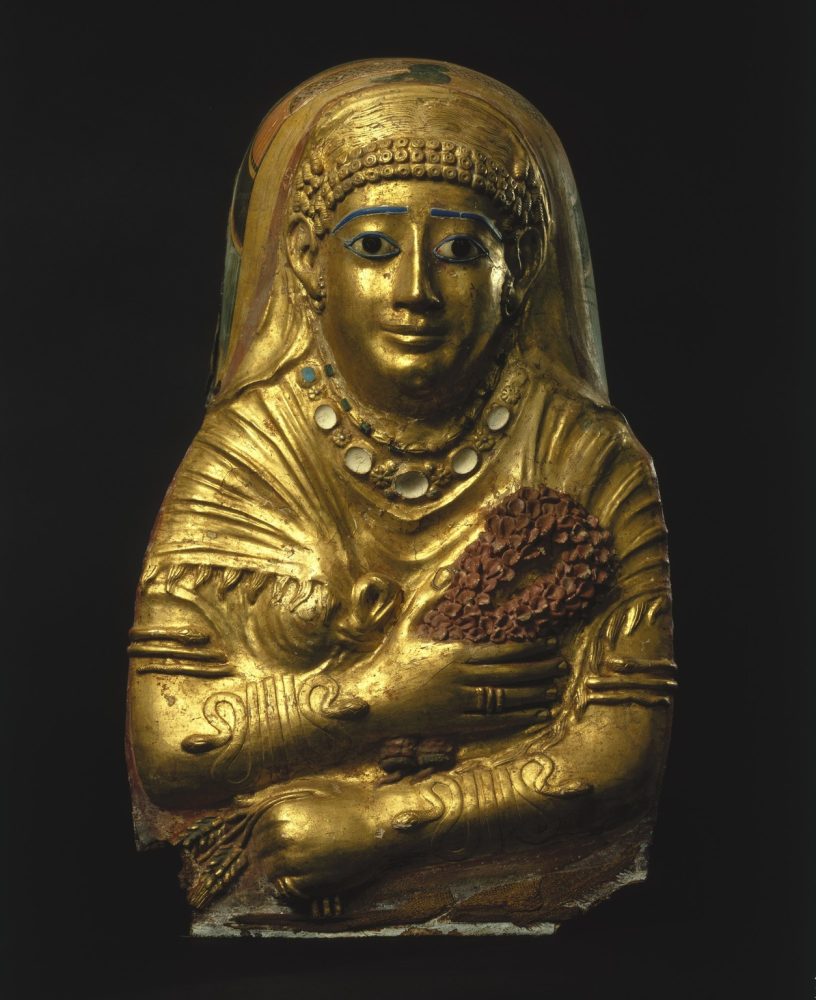
Mummy Cartonnage of a Woman, 1st century C.E. Linen, gesso, gold leaf, glass, faience, 58.4 x 35.6 x 22.9 cm
“Mummy cartonnage of a woman with draped garment [Isis knot], elaborate coiffure, eyes inlaid with glass, necklace (formerly inlaid throughout) and garland. There are also serpent-armlets, in relief, on the upper arms and wrists. The front is mostly gilded, but wreath and top and sides of head are painted.”
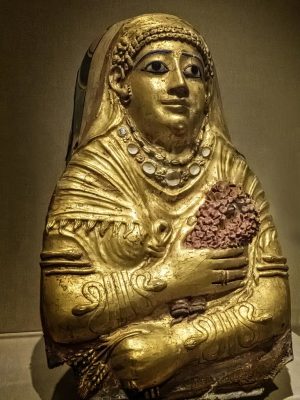
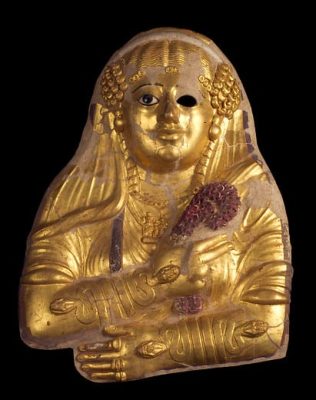
Gilded mummy cartonnage; woman, face and arms gilt, wreath of red flowers in right hand, double headed snake bracelet on both forearms, necklace and pectoral and earrings. Roman Period, Hawara (149CE-30BCE) height 50 cm width 40 cm.


Decorated bodies for eternal life: A multidisciplinary study of late Roman Period stucco-shrouded portrait mummies from Saqqara (Egypt)
Stephanie Zesch


Decorated bodies for eternal life: A multidisciplinary study of late Roman Period stucco-shrouded portrait mummies from Saqqara (Egypt)
Stephanie Zesch

© Julia Thorne, Manchester Museum
https://the-past.com/feature/going-for-gold-reconsidering-mummies-from-the-graeco-roman-period/
- Gilding Technique and Conservation of a Gilded Greco-Roman Cartonnage in Hurghada Museum
Dr. Gehan Adel Mahmoud, Restoration Department, Faculty of Archaeology, Luxor University 2020.


